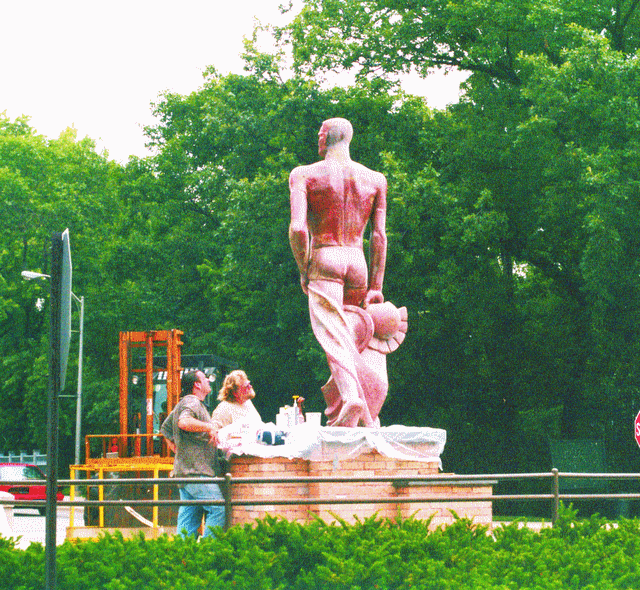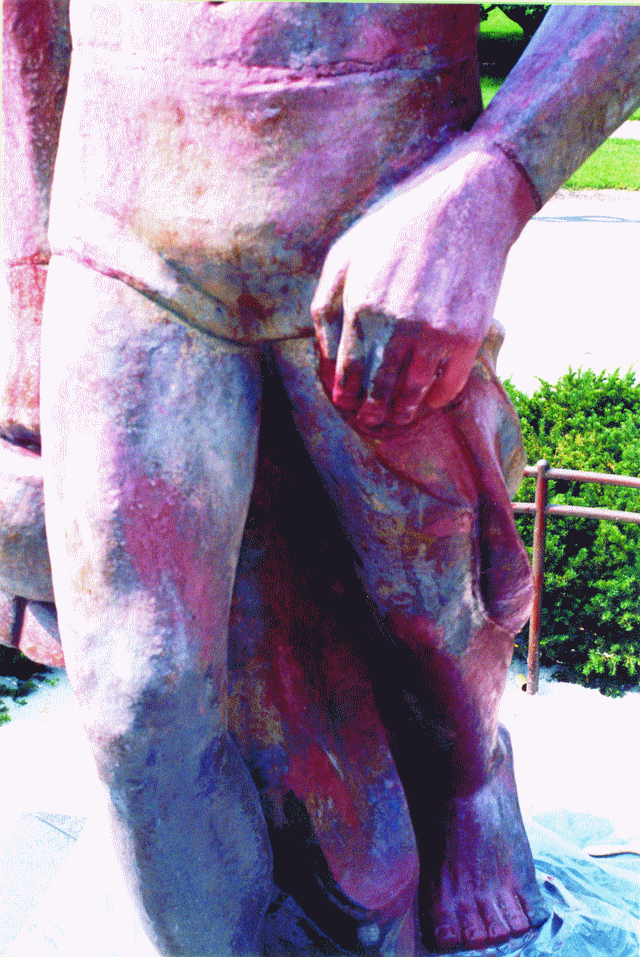
by Mike Barker
Above: While repairing Sparty, ceramicist Curt LaCross applies his custom matching epoxy coating.
For over fifty years, “Sparty” has been a familiar figure on the campus of Michigan State University in East Lansing, Michigan. The Spartan statue was built in 1945 and, at 11′ tall and 3000 lb, it is believed to be the world’s largest freestanding ceramic sculpture. Sparty has survived many an attack by vandals, but it is no match for Michigan winters. The campus landmark is disintegrating. Because of a shortage of metals during the war, it was built of terra cotta instead of bronze. Terra cotta is a fired clay ceramic similar to drain tile or flower pots, which makes it vulnerable to the elements. The 1″-1½” thick terra cotta shell was fired in sections and assembled to cover a reinforced concrete core. Over the years, water has penetrated to the core, and repeated freeze/thaw cycles have fractured much of the shell, especially in the lower portion.
In 1997, the university called in Curt LaCross, a ceramicist and MSU alumni, to repair some missing fingers and toes. Curt made the repairs and has been keeping Sparty intact ever since. In the spring of 2002, he completed a major restoration. Using his knowledge of ceramic materials and his experience with WEST SYSTEM® Epoxy, Curt created unique compounds and coatings tailored for this repair. After reshaping missing parts with clay-thickened epoxy putty, he coated the repairs with a mixture of epoxy, calcined clays, various colorants, and 406 Filler to match the original salt-glazed exterior of the terra cotta surface.
Even with the annual epoxy repairs, Curt says the statue’s days are numbered. He recommends that it be recast in bronze, as intended many years ago.






